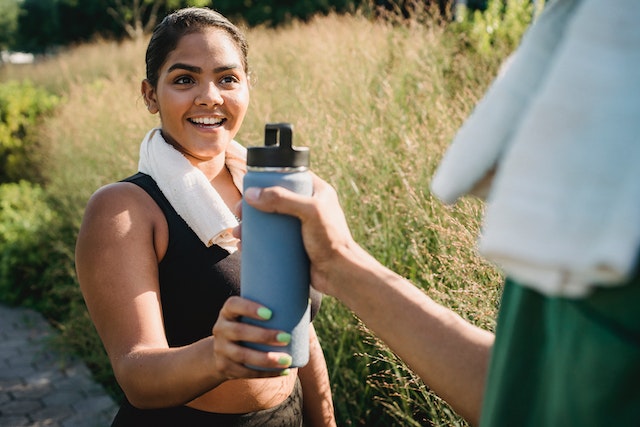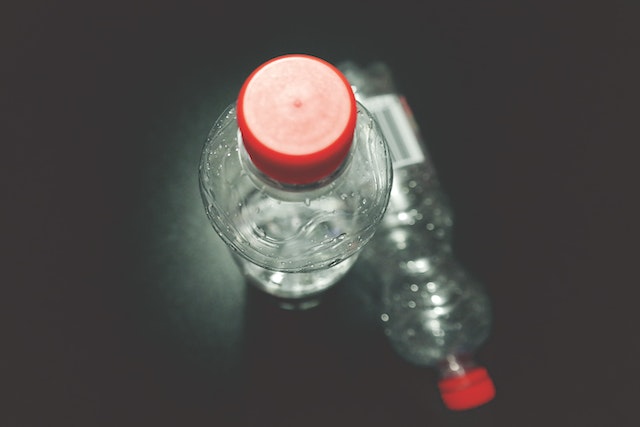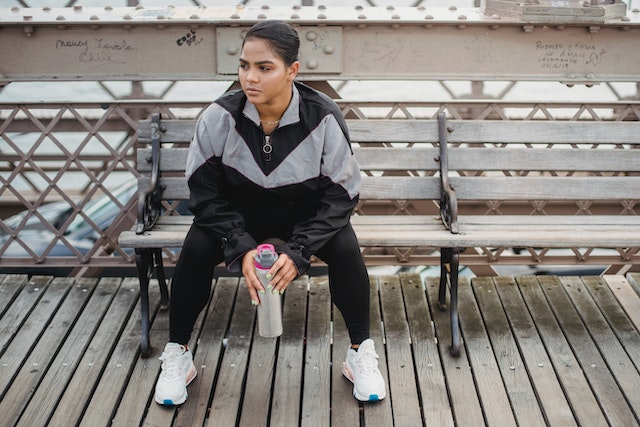Introduction
Water is a fundamental necessity of life, and its measurement can be a topic of interest and practical importance. Understanding the relationship between liters and bottles of water is not only beneficial for everyday tasks but also for staying hydrated efficiently. In this comprehensive article, we’ll delve into how many bottles of water in a liter, shedding light on the metric connection and providing insights into various aspects of water measurement.
Table of Contents
The Basics of Bottle Sizes
Before we dive into the specifics, it’s essential to understand the basics of bottle sizes commonly found in the market:
- Milliliters (ml): Milliliters are a metric unit of volume, and they are commonly used to denote the capacity of smaller bottles, typically ranging from 250 ml to 750 ml.
- Liters (L): A liter is a larger unit of volume and is often used to express the capacity of standard-sized water bottles, typically 1 liter or 1.5 liters.
- Gallons: In some regions, particularly the United States, you might come across water bottles in gallons. A gallon is equivalent to approximately 3.78 liters.

Basic of the Liter
The liter is a fundamental unit of measurement in the metric system, which is widely used worldwide. Here are some basic concepts about the literature:
1. Volume Measurement: The liter (symbol: L or l) is a unit of volume. It measures the amount of space a substance occupies, typically a liquid like water. One liter equals 1,000 cubic centimeters (cm³) or one cubic decimeter (dm³).
2. Metric System: The metric system includes the liter and is a decimal-based measurement system. This means that conversions within the metric system are straightforward as they involve powers of 10.
3. Multiples and Submultiples: The metric system employs a system of prefixes to represent multiples and submultiples of the liter. For example:
- A kiloliter (kL) is equal to 1,000 liters.
- A deciliter (dL) is one-tenth (1/10) of a liter.
- A centiliter (cL) is one-hundredth (1/100) of a liter.
- A milliliter (mL) is one-thousandth (1/1,000) of a liter.
4. Versatility: The liter is a versatile unit of measurement and is not limited to measuring liquids. It can quantify the volume of gases, solids, and any substance that occupies space.
5. Common Usage: Liters are commonly used to measure the volume of beverages, such as bottled water, soft drinks, and milk. They also express the capacity of containers like tanks, bottles, and fuel tanks.
6. Conversion to Other Units: Understanding the relationship between liters and other metric units is essential. For instance, 1 liter equals 0.001 cubic meters (m³) or 1,000 milliliters (mL).
7. Everyday Application: You may encounter liters when purchasing beverages or cooking daily. Recipes often specify ingredients in liters or milliliters for precise measurements.
8. Environmental Impact: The literature is relevant when considering environmental issues, particularly water consumption, pollution, and conservation.
9. International Standard: The literature is an internationally recognized measurement standard. It is used in scientific research, industry, trade, and everyday life across most countries worldwide.
10. Practical Use: Understanding the concept of the liter is practical for tasks like measuring ingredients for recipes, calculating the capacity of containers, estimating fuel consumption, and managing liquid volumes for various purposes.
How Many Bottles of water in a Liter?
Now, let’s address the central question: how many bottles of water in a liter? To determine this, we need to consider the size of a standard water bottle.
A standard water bottle typically holds 16.9 fluid ounces, equivalent to approximately 0.5 liters. Therefore, you can fit two standard water bottles in a 1-liter container.
Here’s the math: 1 liter ÷ 0.5 liters per bottle = 2 bottles.
So, in a 1-liter container, you’ll find space for two standard-sized water bottles.

How Many Bottles of water in a 2-Liter Container?
Now that we’ve established the relationship between liters and standard water bottles let’s explore how many bottles fit in a 2-liter container.
A 2-liter container, as the name suggests, has a capacity of 2 liters. Since each standard water bottle holds 0.5 liters, you can calculate the number of bottles as follows:
2 liters ÷ 0.5 liters per bottle = 4 bottles.
In a 2-liter container, you can comfortably fit four standard-sized water bottles.
The Metric System and Liters
The metric system, or the International System of Units , is a globally adopted measurement system. It uses base units, prefixes, and decimal multiples to provide a consistent and standardized way to measure quantities. The liter (L) is a unit within the metric system for measuring volume.
One liter (L) equals 1,000 milliliters (mL), making it a practical unit for measuring fluids, including water.
Types and Sizes of Water Bottles
Water bottles come in various shapes and sizes, and their volume can vary significantly. Some common types of water bottles include:
- Standard 16.9 oz (500 mL) Bottle: Often used for single servings of water and widely available.
- 1-Liter Bottle: A more prominent option, equivalent to 1,000 mL or one liter.
- 1.5-liter Bottle: A more significant size suitable for sharing or extended periods without refilling.
- Gallon Jug: Commonly used in the United States, equivalent to approximately 3.78 liters.
- Reusable Water Bottles: Available in various sizes, these can range from small 12 oz bottles to larger 32 oz (1 quart) bottles.
Staying Hydrated
Regardless of your bottle size, staying hydrated is essential for your well-being. Here are some general tips for maintaining good hydration:
- Set Daily Goals: Determine the amount of water you need to drink daily based on your activity level, climate, and individual needs.
- Use a Reusable Bottle: Consider investing in a reusable water bottle to reduce plastic waste and save money in the long run.
- Create a Routine: Establish a routine for drinking water throughout the day, such as having a glass when you wake up and before meals.
- Monitor Your Intake: Keep track of your daily water consumption to ensure you’re meeting your hydration goals.
Practical Applications
Understanding the relationship between liters and bottles of water can be helpful in various situations:
- Staying Hydrated: Knowing how many bottles of water make up a liter can assist in tracking your daily water intake. For example, if you want to drink 2 liters of water daily, you must consume approximately four standard 16.9 oz bottles.
- Grocery Shopping: When purchasing water, especially in bulk, understanding the number of bottles in a liter helps you make informed choices and ensure you have enough water for your needs.
- Travel: When traveling, having a sense of how much water you’re consuming can be beneficial to staying hydrated without overpacking.
- Cooking and Baking: Some recipes call for specific measurements of water in liters, so knowing the bottle-to-liter conversion can be handy in the kitchen.

Environmental Considerations
While bottled water is convenient, it’s essential to be mindful of its environmental impact. Single-use plastic bottles contribute to plastic waste and have implications for ecosystems and wildlife. Many people are opting for reusable water bottles as a more sustainable choice.
By understanding the relationship between liters and bottles, you can make informed choices about the type of water containers you use and consider eco-friendly alternatives.
Conclusion about bottles of water in a liter
The connection between liters and bottles of water is a practical and informative aspect of everyday life. Whether you’re tracking your hydration, shopping for water, or considering environmental impacts, knowing how many bottles make up a liter can be valuable. It empowers you to make informed choices that align with your needs and values, whether striving for personal health or contributing to a sustainable future.

Frequently Asked Questions (FAQs): Bottles of Water in a Liter
1. How many bottles of water in a liter?
- A standard-sized water bottle typically contains 500 milliliters (ml) of water. Since there are 1,000 milliliters per liter, you can fit two standard 500 ml water bottles in a 1-liter container.
2. How many milliliters are in a liter?
- There are 1,000 milliliters (ml) in one liter (L). This metric conversion is essential for understanding the relationship between liters and milliliters.
3. What’s the capacity of a 2-liter container?
- A 2-liter container holds precisely 2 liters of liquid. Using standard 500 ml water bottles, you can fit four in a 2-liter container.
4. Why do water bottles come in different sizes?
- Water bottles come in various sizes to cater to different preferences and needs. Smaller bottles, like 500 ml, are convenient for on-the-go hydration, while larger containers, such as 1 liter or 2 liters, are suitable for sharing or daily water intake.
5. How can I choose the right bottle size for my hydration needs?
- Your choice of bottle size should depend on factors like your daily water intake goals, portability, environmental concerns, and personal preferences. Smaller bottles are easy to carry, while larger containers are cost-effective and eco-friendly.
6. Are 2-liter containers more cost-effective than smaller bottles?
- Buying water in larger quantities, such as 2-liter containers, is often more cost-effective per liter than purchasing individual smaller bottles. It can save you money in the long run.
7. What’s the environmental impact of using larger containers?
- Opting for larger containers or reusable bottles can reduce the environmental impact of single-use plastic bottles. Fewer bottles mean less plastic waste.
8. How much water should I drink daily?
- Daily water intake recommendations vary, but aim for about eight glasses of water daily, roughly 2 liters. However, individual needs depend on age, activity level, climate, and overall health.
